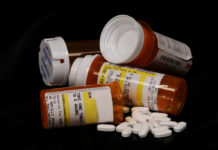successfully introduced to XR-naltrexone (32.7 percent versus 56.1 percent) and also acquire a follow-up injection at the fifth week (50 percent versus 26.9 percent).
“Many healthcare providers believe that the best way to help patients become opioid-free is to gradually taper down buprenorphine,” Sullivan said. “But we did not find any advantage to this approach; in fact, the long half-life of buprenorphine means that patients end up having to wait several days after completing the buprenorphine taper before they can receive XR-naltrexone.”
Starting with low doses of oral naltrexone allowed participants to undergo a “gradually increasing opioid blockade,” she said. “Patients often feel encouraged as the week goes on since they are becoming more comfortable. On the other hand, patients detoxing with buprenorphine become progressively less comfortable, as the buprenorphine is lowered. And increased withdrawal symptoms can lead to cravings and often relapse.”
According to the researchers, the results indicated the safety, efficiency and tolerability of low-dose naltrexone, in combination with a single daily dose of buprenorphine and adjunctive non-opioid medicine for initiating individuals with opioid addiction to XR-naltrexone
“Our findings address an unmet need for a time- and cost-efficient approach to opioid detoxification,” she said. “Many clinicians have expressed that successfully managing opioid withdrawal symptoms in an outpatient setting can be challenging. In addition, this study highlights the underutilized potential of nurses to provide psychoeducational support during the detoxification process. With physician time limited, nurses can play an important role in assessing opioid withdrawal and encouraging patient adherence.”
The strategy provides an encouraging alternative to the immense rates of “attrition and relapse currently observed with agonist tapers in both inpatient and outpatient settings,” the study stated.
Although the Substance Abuse and Mental Health Services Administration (SAMHSA) cannot comment on the off-label use of pharmaceutical drugs, “we know now that extended-release injectable naltrexone for many is effective,” said Dr. Mitra Ahadpour, director of the division of pharmacological therapies at SAMHSA. However, she added that “some people do better on one medication versus another.”
“Development of a standard, fixed-dose regimen of oral naltrexone, which can be given by any physician or nurse practitioner in an outpatient setting, could considerably expand access to XR-naltrexone for many opioid-dependent patients not currently in treatment,” Sullivan said. “It is this possibility of finding a way to improve treatment access and give individuals the choice of becoming opioid-free that I find most exciting about these results. Helping opioid-dependent patients to achieve abstinence, and then adhere to a medication which prevents relapse, is what I find most rewarding about my work as an addiction psychiatrist.”















